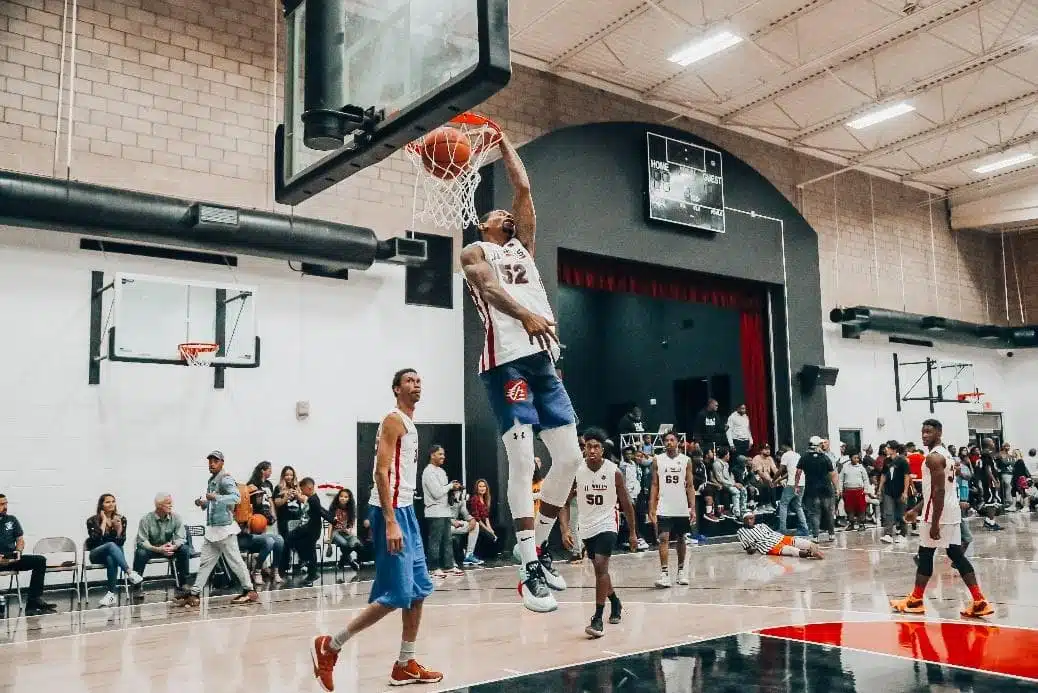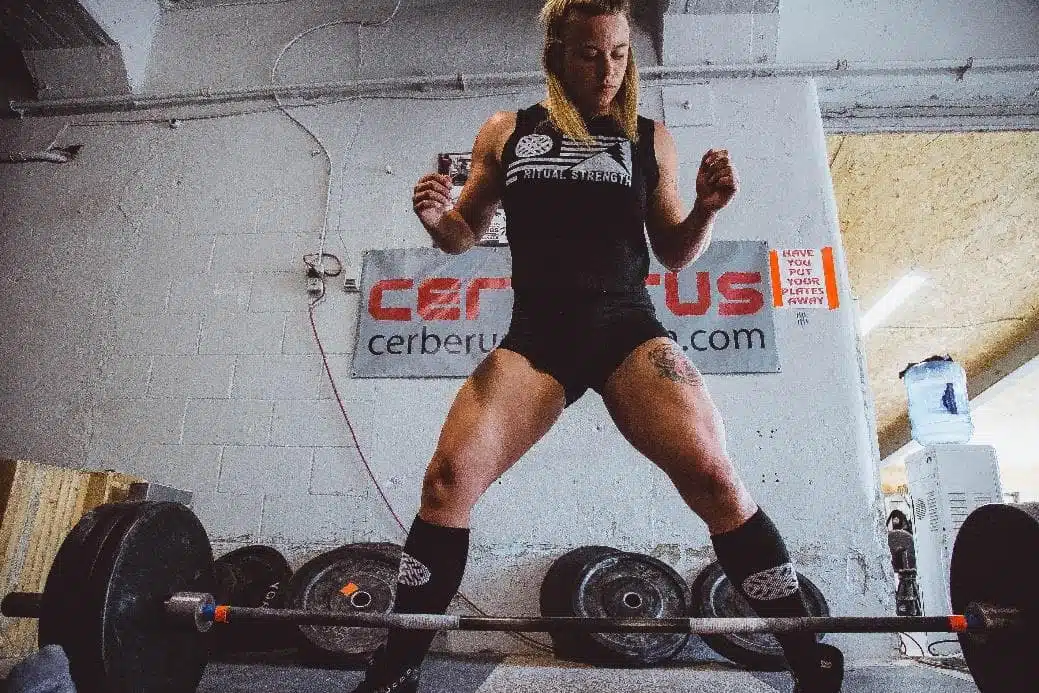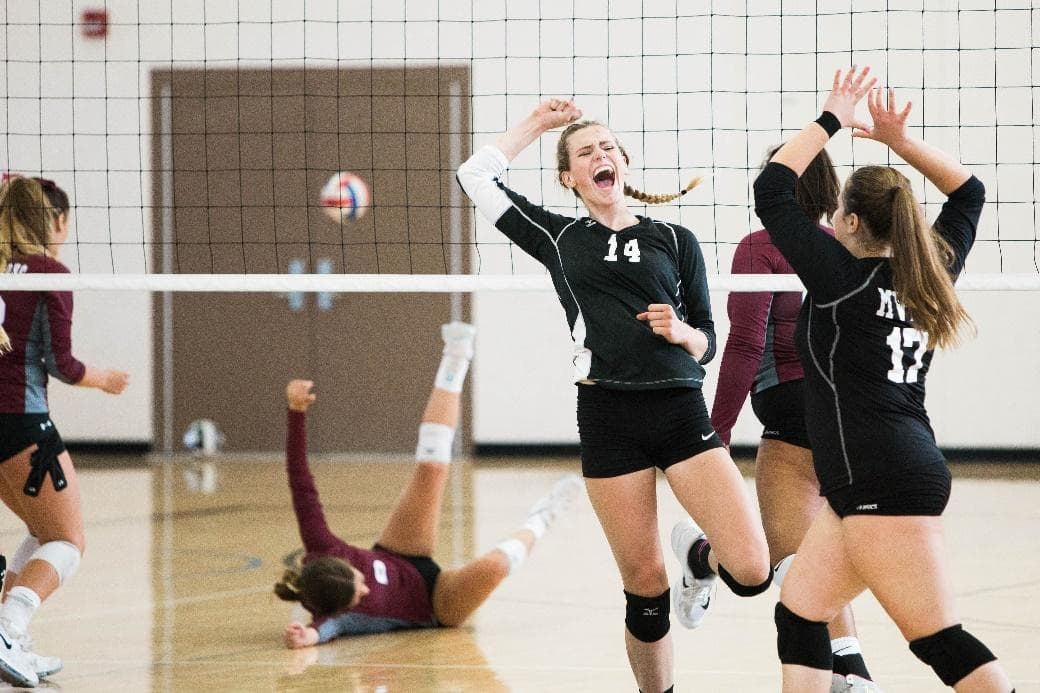12 de November de 2022
The Basics of Periodization Training in Sports
Periodization of training in sport: what is it and where does it come from?

Image taken by Joel Muniz (Unsplash)
The periodization of training is the tool that coaches have for athletes to respond to the training load with beneficial adaptations for their sports performance (Medicine, 2013). If the load used is less than necessary, no adaptation or improvement will occur. If the load is too high and too frequent, training adaptations will be negative (burnout and overtraining), which will cause performance to worsen rather than improve (Bell, Ruddock, Maden-Wilkinson, & Rogerson, 2020). Based on this, training periodization is the planned manipulation of training variables (load, sets, and repetitions) to maximize training adaptations and prevent the occurrence of overtraining syndrome (Buford, Rossi, Smith, & Warren, 2007; D. S. Lorenz, Reiman, & Walker, 2010a).
Seyle’s General Adaptation Syndrome
The concept of training periodization is attributed to Hans Seyle for his research on General Adaptation Syndrome (Cunanan et al., 2018; Selye, 1938). The author observed in his studies with mice that they produced an adaptive response to stress. This syndrome, in short, states that systems will adapt to any stressors they may experience. According to Seyle, this is achieved through a three-phase process (Selye, 1976):
- Alarm/reaction phase: the athlete reacts to the stressor first with muscle stiffness, soreness or a small drop in performance due to fatigue after the training session.
- Endurance phase: the body responds to the stressor by adapting to the new stress with less soreness, stiffness, more tolerance to the activity and improved performance. This process is known as supercompensation, and means that our body is able to withstand more stress than before, due to the adaptation produced.
- Burnout phase: This phase occurs if the stressor lasts longer than the time we need to recover and adapt. The athlete may experience stagnation in training or deal with symptoms of overtraining
Fitness-fatigue model
The fitness-fatigue model considers training periodization as a balancing act between fitness and fatigue (Plisk & Stone, 2003). An athlete’s readiness is the constant result of the interaction between his or her fitness level and the amount of fatigue. In that association, there are three different scenarios that highlight a correct periodization of training (Mujika, Halson, Burke, Balagué, & Farrow, 2018):
- Positive adaptations and improved sports performance: volume and intensity are altered methodically taking into account the fatigue generated and the objective sought. Sometimes the volume and intensity will be higher, sometimes lower, but always stressing the body to adapt to those loads, and giving enough time for it to recover.
- There are no adaptations, neither positive nor negative: when there are no changes in volume and intensity, the system does not need to adapt. We always do the same thing, or we train with a lower volume and intensity than what the athlete needs to stress his system.
- Negative adaptations and worsening of sports performance: If the load is too high, the physiological costs will be too great and the athlete’s physical preparation for the training will be compromised.
Why should we take training periodization into account?
A periodized program helps to avoid exhaustion, overtraining and the negative adaptations involved (Kiely, 2018). Proper variation of training load (sets, repetitions, exercise order, number of exercises, resistance, rest periods, type of contractions or frequency of training) will boost positive adaptations, always taking into account the fatigue generated (D. Lorenz & Morrison, 2015).
An additional benefit is to avoid training stagnation or boredom (Clemente-Suarez, Ramos-Campo, Tornero-Aguilera, Parraca, & Batalha, 2021). And the most important reason is that training periodization is useful to obtain greater gains in strength and muscle mass, with compared to non-periodized training (Williams, Tolusso, Fedewa, & Esco, 2017), and also endurance (Casado, González-Mohíno, González-Ravé, & Foster, 2022).
Structure of the periodization of training in sport

Image taken from Alora Griffiths (Unsplash)
To properly understand the bases of training periodization, it is necessary to name the structures that make up these cycles and organized sequences. Below, we describe the structures of training periodization, ordered from smallest to largest (D. Lorenz & Morrison, 2015; Lyakh et al., 2016).
Training session
The training session is the smallest structure in which training periodization is organized. A day can have one or several sessions, and in turn, each session can have different training units, whether they are strength, endurance, mobility, etc.
Microcycle
A microcycle can range from three or four days to two weeks, with the one-week extension being the most common microcycle. These microcycles have a common function and are organized according to their volume and intensity. Some examples of microcycles are: impact or shock in which we take the magnitude of the load to extreme limits; setting to anchor training for subsequent microcycles with low to moderate volume and intensity; or many other types.
Mesocycle
The union of several microcycles associated with a stage of homogeneous objectives is called a mesocycle. It usually groups between three and six microcycles, with a period of one month being the most commonly used. In these mesocycles, the microcycles are organized to achieve the desired adaptations, but giving the system room to recover and not reach exhaustion or overtraining.
Macrocycle
A macrocycle is a succession of mesocycles aiming at an adaptation peak, or several, in order to carry out a specific competition at that peak. In some sports such as long-distance running or powerlifting, the macrocycle will be organized according to the competition. From there, we will generate microcycles and mesocycles backwards, so that the goal is to reach that competition in peak form. However, most sports require frequent competitions, such as soccer, basketball or field hockey in which there are one or more competitions a week. In that case, periodization of training is fundamental to evaluate the critical moments of the season when we need to be physically fitter, and others in which the training loads may be greater.
Training periodization models in sports

Image taken from Vince Fleming (Unsplash)
A common confusion when talking about training periodization is to associate non-periodized training with non-linear periodization (Afonso, Clemente, Ribeiro, Ferreira, & Fernandes, 2020). A non-periodized training is one in which no training structuring is taken into account, i.e., we train without a logical and ordered sequence, as they do in periodized training of any kind (Afonso et al., 2020).
Such periodized training can be linear, non-linear or block training. As its name suggests, linear periodization consists of gradually increasing or decreasing volume and intensity over the weeks, while non-linear periodization is more sophisticated and performs variations of volume and intensity in shorter periods, which can be within the same week, or even within the same day (Simão et al., 2012).
This is the reason why a non-periodized training can be confused with a non-linear periodization, because without knowing it, we are performing those ups and downs of the load throughout the week. However, in non-linear periodization everything is structured within the season, while in non-periodized training we do it randomly.
Linear periodization or regular load model
Linear periodization is the easiest to perform, but it has a basic flaw: the adaptive effects of training programs are inevitably nonlinear (Denison & Mills, 2014). Athletes are complex adaptive systems, whose training-induced responses vary considerably depending on a multitude of factors (genetics, sleep hours, diet, training experience, etc.). This means that they cannot be treated as machines that are subjected to a stress or training load and respond to it in the same way every time.
In addition, this training periodization model was conceived as a strategy for Olympic weightlifters to prepare for one competition per year (Dietz & Peterson, 2012). Athletes have multiple competitions in a season, and that, together with other drawbacks, makes the nonlinear periodization model more appealing and effective in most sports (McNamara & Stearne, 2013). Such nonlinear periodization is a better fit for most sports, as it allows the stimulus to be varied frequently, depending on the athlete’s condition.
In classical linear periodization there is a gradual increase in intensity while there is a progressive decrease in volume (Harries, Lubans, & Callister, 2015). We start with low intensity and high volume to end with high intensity and low volume.
In reverse linear periodization there is a gradual increase in volume while there is a progressive decrease in intensity (Harries et al., 2015). We start with low volume and high intensity to finish with high volume and low intensity. It is little used in strength, but widely used in endurance (Casado et al., 2022; Williams et al., 2017).
Nonlinear or undulating periodization
Nonlinear periodization allows for greater variation in training progressions (Afonso et al., 2020). It is characterized by more frequent alterations in volume and intensity, which may be biweekly, weekly, or daily (D. S. Lorenz, Reiman, & Walker, 2010b). Weekly fluctuations in training loads may result in better neuromuscular adaptations compared to the linear model, as loads are more unpredictable. Another advantage is that this non-linear periodization modifies the training program depending on an athlete’s recovery.
Weekly undulating periodization varies each week in volume and intensity (Spineti et al., 2013). One week can be dedicated to a workout focused on power, the following week on muscle mass gain, and so on with any physical quality. If instead of varying every week, we modify the volume and intensity on a daily basis, the periodization model is known as daily undulating. Within the same week, Monday can be dedicated to power, Wednesday to muscular hypertrophy and Friday to maximum strength, for example.
There is another undulating model known as flexible periodization (McNamara & Stearne, 2013). Today, if the coach has the right knowledge and means, it is the best option for scheduling workouts. Subjects are free to choose an easier workout on a given day depending on how tired they are. Flexible nonlinear periodization allows to adapt to the needs of each individual situation on a daily basis (Kraemer, Torine, Dudley, & Martin, 2015).
The disadvantage is that the coach must rely on the athlete’s sensations if he does not have devices such as, for example, a speed measuring device. These types of speed measurement devices give us information about the athlete’s condition in just a few seconds (Cooper, Dabbs, Davis, & Sauls, 2020; Jiménez-Reyes et al., 2019). In the warm-up, depending on the speed at which a load is lifted, or if we measure a vertical jump, we already know if he/she is recovered and can train harder, or he is fatigued and must perform a smoother training. In this way, we can carry out a flexible periodization according to each athlete individually.
Block periodization
This block periodization model is a hybrid between linear and nonlinear periodization (Issurin, 2010). This type of periodization does not focus solely on one peak performance per season, as does linear periodization, nor does it vary intensity and volume as frequently as does the nonlinear model. As the name suggests, block training periodization concentrates the development of a physical quality, while maintaining the gains made in previous weeks.
The block approach is divided into three distinct phases (Stone et al., 2021):
- Accumulation phase: develops work capacity with general movements, high volume and medium intensity.
- Transformation phase: refines the development of the trained physical quality with more specific exercises, medium volume and somewhat higher loads than in the accumulation phase.
- Realization phase: seeks the optimal point of form and focuses on the movements of the sport with high intensity and low volume.
Joaquin Vico Plaza
References
- Afonso, J., Clemente, F. M., Ribeiro, J., Ferreira, M., & Fernandes, R. J. (2020). Towards a de facto Nonlinear Periodization: Extending Nonlinearity from Programming to Periodizing. Sports, 8(8). https://doi.org/10.3390/SPORTS8080110
- Bell, L., Ruddock, A., Maden-Wilkinson, T., & Rogerson, D. (2020). Overreaching and overtraining in strength sports and resistance training: A scoping review. Journal of Sports Sciences, 38(16), 1897–1912. https://doi.org/10.1080/02640414.2020.1763077
- Buford, T. W., Rossi, S. J., Smith, D. B., & Warren, A. J. (2007). A comparison of periodization models during nine weeks with equated volume and intensity for strength. Journal of Strength and Conditioning Research, 21(4), 1245–1250. https://doi.org/10.1519/R-20446.1
- Casado, A., González-Mohíno, F., González-Ravé, J. M., & Foster, C. (2022). Training Periodization, Methods, Intensity Distribution, and Volume in Highly Trained and Elite Distance Runners: A Systematic Review. International Journal of Sports Physiology and Performance, 17(6), 820–833. https://doi.org/10.1123/IJSPP.2021-0435
- Clemente-Suárez, V. J., Ramos-Campo, D. J., Tornero-Aguilera, J. F., Parraca, J. A., & Batalha, N. (2021). The Effect of Periodization on Training Program Adherence. International Journal of Environmental Research and Public Health, 18(24). https://doi.org/10.3390/IJERPH182412973
- Cooper, C. N., Dabbs, N. C., Davis, J., & Sauls, N. M. (2020). Effects of Lower-Body Muscular Fatigue on Vertical Jump and Balance Performance. Journal of Strength and Conditioning Research, 34(10), 2903–2910. https://doi.org/10.1519/JSC.0000000000002882
- Cunanan, A. J., DeWeese, B. H., Wagle, J. P., Carroll, K. M., Sausaman, R., Hornsby, W. G., … Stone, M. H. (2018). The General Adaptation Syndrome: A Foundation for the Concept of Periodization. Sports Medicine (Auckland, N.Z.) , 48(4), 787–797. https://doi.org/10.1007/S40279-017-0855-3
- Denison, J., & Mills, J. P. (2014). Planning for distance running: coaching with Foucault. Http://Dx.Doi.Org/10.1080/21640629.2014.953005, 3(1), 1–16. https://doi.org/10.1080/21640629.2014.953005
- Dietz, C., & Peterson, B. (2012). Triphasic training : a systematic approach to elite speed and explosive strength performance.
- Harries, S. K., Lubans, D. R., & Callister, R. (2015). Systematic review and meta-analysis of linear and undulating periodized resistance training programs on muscular strength. Journal of Strength and Conditioning Research, 29(4), 1113–1125. https://doi.org/10.1519/JSC.0000000000000712
- Issurin, V. B. (2010). New horizons for the methodology and physiology of training periodization. Sports Medicine (Auckland, N.Z.) , 40(3), 189–206. https://doi.org/10.2165/11319770-000000000-00000
- Jiménez-Reyes, P., Pareja-Blanco, F., Cuadrado-Peñafiel, V., Ortega-Becerra, M., Párraga, J., & González-Badillo, J. J. (2019). Jump height loss as an indicator of fatigue during sprint training. Journal of Sports Sciences, 37(9), 1029–1037. https://doi.org/10.1080/02640414.2018.1539445
- Kiely, J. (2018). Periodization Theory: Confronting an Inconvenient Truth. Sports Medicine (Auckland, N.Z.) , 48(4), 753–764. https://doi.org/10.1007/S40279-017-0823-Y
- Kraemer, W. J., Torine, J. C., Dudley, J., & Martin, G. J. (2015). Nonlinear periodization: Insights for use in collegiate and professional American football resistance training programs. Strength and Conditioning Journal, 37(6), 17–36. https://doi.org/10.1519/SSC.0000000000000179
- Lorenz, D., & Morrison, S. (2015). Current concepts in periodization of strength and conditioning for the sports physical therapist. International Journal of Sports Physical Therapy, 10(6), 734. Retrieved from /pmc/articles/PMC4637911/
- Lorenz, D. S., Reiman, M. P., & Walker, J. C. (2010a). Periodization: current review and suggested implementation for athletic rehabilitation. Sports Health, 2(6), 509–518. https://doi.org/10.1177/1941738110375910
- Lorenz, D. S., Reiman, M. P., & Walker, J. C. (2010b). Periodization: current review and suggested implementation for athletic rehabilitation. Sports Health, 2(6), 509–518. https://doi.org/10.1177/1941738110375910
- Lyakh, V., Mikołajec, K., Bujas, P., Witkowski, Z., Zajac, T., Litkowycz, R., & Banyś, D. (2016). Periodization in Team Sport Games – A Review of Current Knowledge and Modern Trends in Competitive Sports. Journal of Human Kinetics, 54(1), 173. https://doi.org/10.1515/HUKIN-2016-0053
- McNamara, J. M., & Stearne, D. J. (2013). Effect of concurrent training, flexible nonlinear periodization, and maximal-effort cycling on strength and power. Journal of Strength and Conditioning Research, 27(6), 1463–1470. https://doi.org/10.1519/JSC.0B013E318274F343
- Medicine, A. C. of S. (2013). ACSM’s guidelines for exercise testing and prescription. Lippincott williams & wilkins.
- Mujika, I., Halson, S., Burke, L. M., Balagué, G., & Farrow, D. (2018). An Integrated, Multifactorial Approach to Periodization for Optimal Performance in Individual and Team Sports. International Journal of Sports Physiology and Performance, 13(5), 538–561. https://doi.org/10.1123/IJSPP.2018-0093
- Plisk, S. S., & Stone, M. H. (2003). Periodization Strategies. Strength and Conditioning Journal, 25(6), 19–37. https://doi.org/10.1519/00126548-200312000-00005
- Selye, H. (1938). EXPERIMENTAL EVIDENCE SUPPORTING THE CONCEPTION OF “ADAPTATION ENERGY.” Https://Doi.Org/10.1152/Ajplegacy.1938.123.3.758, 123(3), 758–765. https://doi.org/10.1152/AJPLEGACY.1938.123.3.758
- Selye, H. (1976). Stress without Distress. Psychopathology of Human Adaptation, 137–146. https://doi.org/10.1007/978-1-4684-2238-2_9
- Simão, R., Spineti, J., De Salles, B. F., Matta, T., Fernandes, L., Fleck, S. J., … Strom-Olsen, H. E. (2012). Comparison between nonlinear and linear periodized resistance training: Hypertrophic and strength effects. Journal of Strength and Conditioning Research, 26(5), 1389–1395. https://doi.org/10.1519/JSC.0B013E318231A659
- Spineti, J., Figueiredo, T., de Salles, B. F., Assis, M., Fernandes, L., Novaes, J., & Simão, R. (2013). Comparison between different periodization models on muscular strength and thickness in a muscle group increasing sequence. Revista Brasileira de Medicina Do Esporte, 19(4), 280–286. https://doi.org/10.1590/S1517-86922013000400011
- Stone, M. H., Hornsby, W. G., Haff, G. G., Fry, A. C., Suarez, D. G., Liu, J., … Pierce, K. C. (2021). Periodization and Block Periodization in Sports: Emphasis on Strength-Power Training-A Provocative and Challenging Narrative. Journal of Strength and Conditioning Research, 35(8), 2351–2371. https://doi.org/10.1519/JSC.0000000000004050
- Williams, T. D., Tolusso, D. V., Fedewa, M. V., & Esco, M. R. (2017). Comparison of Periodized and Non-Periodized Resistance Training on Maximal Strength: A Meta-Analysis. Sports Medicine (Auckland, N.Z.) , 47(10), 2083–2100. https://doi.org/10.1007/S40279-017-0734-Y

